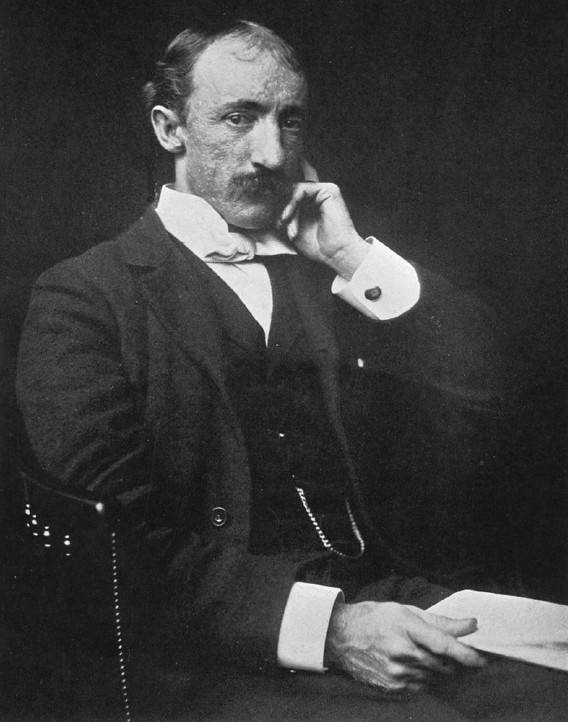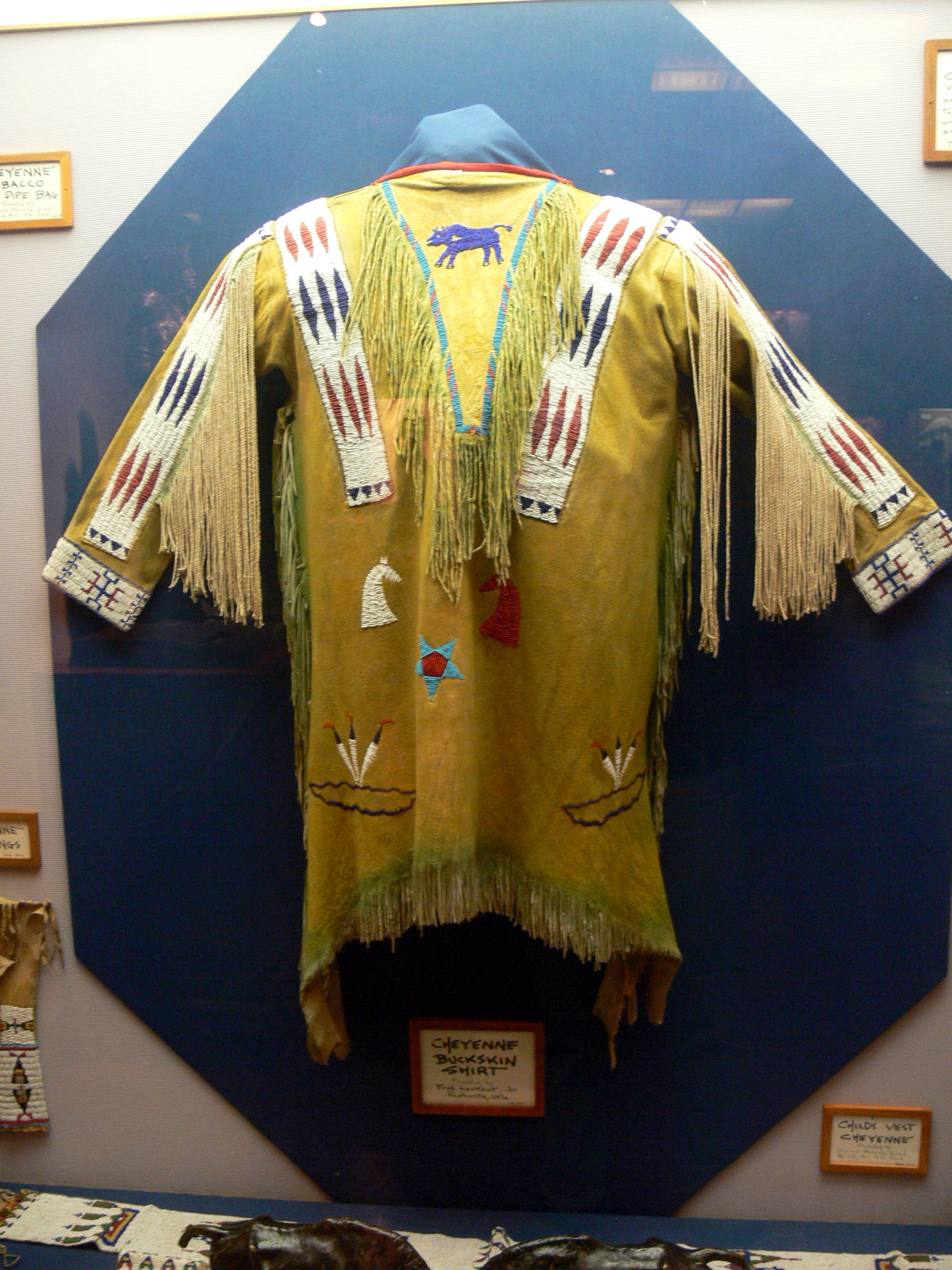|
Tichkematse
Tichkematse, also called "Squint Eyes" or Quchkeimus (c. 1857–1932) (Cheyenne), was an artist and collector who worked for the Smithsonian Institution in Washington, DC between 1879 and 1881. He is known for his ledger art, begun in the period from 1875 to 1878 while he was held as a prisoner of war at Fort Marion in Florida. He continued to make ledger art after his release. His work is part of the Smithsonian Institution collection and it published a book of his drawings. He also was known for his expertise as a collector of bird and mammal specimens, and Cheyenne crafts. During this period, he also worked with anthropologist Frank Hamilton Cushing in documenting Plains Indian Sign Language. He is also remembered as a Native American artist who painted many murals of Indian life. Leaving hints of Indian records of hunting, military feats, and day-to-day life . After returning to his tribe and leaving the Smithsonian, he continued as a taxidermist by sending many biological spe ... [...More Info...] [...Related Items...] OR: [Wikipedia] [Google] [Baidu] |
Frank Hamilton Cushing
Frank Hamilton Cushing (July 22, 1857 in North East Township, Erie County, Pennsylvania – April 10, 1900 in Washington, D.C.) was an American anthropologist and ethnologist. He made pioneering studies of the Zuni Indians of New Mexico by entering into their culture; his work helped establish participant observation as a common anthropological research strategy. In recent years, however, questions have emerged about Cushing's activities among the Zuni. Consequently, Frank Cushing's work provides an important case study for considering the ethics of both ethnographic research and the generation of museum collections. Early life Cushing was born in the borough of North East, Pennsylvania. He later moved with his family to Western New York. As a boy he took an interest in the Native American artifacts in the surrounding countryside and taught himself how to knap flint (make arrowheads and such from flint). He published his first scientific paper when he was 17. After a brief ... [...More Info...] [...Related Items...] OR: [Wikipedia] [Google] [Baidu] |
Ledger Art
Ledger art is narrative drawing or painting on paper or cloth, predominantly practiced by Plains Indian, but also from the Plateau and Great Basin. Ledger art flourished primarily from the 1860s to the 1920s. A revival of ledger art began in the 1960s and 1970s. The term comes from the accounting ledger books that were a common source of paper for Plains Indians during the late 19th century. Battle exploits were the most frequently represented themes in ledger art. Many ledger artists documented the rapidly changing environment by portraying new technologies such as trains, as well as encounters with European Americans and American soldiers. Other themes such as religious practices, hunting, and courtship were also subjects. Many ledger artists worked together with ethnologists, to document cultural information such as shield and tipi designs, winter counts, dances and regalia. Historical precedents Ledger art evolved from Plains hide painting. [...More Info...] [...Related Items...] OR: [Wikipedia] [Google] [Baidu] |
List Of Native American Artists
This is a list of visual artists who are Native Americans in the United States. The Indian Arts and Crafts Act of 1990 defines "Native American" as being enrolled in either federally recognized tribes or state recognized tribes or "an individual certified as an Indian artisan by an Indian Tribe." This does not include non-Native American artists using Native American themes. Additions to the list need to reference a recognized, documented source and specifically name tribal affiliation according to federal and state lists. Indigenous American artists outside the United States can be found at List of indigenous artists of the Americas. Basket makers * Elsie Allen, Cloverdale Rancheria of Pomo Indians of California, Cloverdale Pomo * Annie Antone, Tohono O'odham * Mary Knight Benson, Pomo, (1877–1930) * William Ralganal Benson, Pomo, (1862–1937) * Carrie Bethel, Mono Lake Paiute * Susan Billy, Hopland Band of Pomo Indians of the Hopland Rancheria, Hopland Band Pomo * Mary ... [...More Info...] [...Related Items...] OR: [Wikipedia] [Google] [Baidu] |
Cheyenne People
The Cheyenne ( ) are an Indigenous people of the Great Plains. The Cheyenne comprise two Native American tribes, the Só'taeo'o or Só'taétaneo'o (more commonly spelled as Suhtai or Sutaio) and the (also spelled Tsitsistas, The term for the Cheyenne homeland is ''Tsistano''. Language The Cheyenne of Montana and Oklahoma speak the Cheyenne language, known as ''Tsėhésenėstsestȯtse'' (common spelling: Tsisinstsistots). Approximately 800 people speak Cheyenne in Oklahoma. There are only a handful of vocabulary differences between the two locations. The Cheyenne alphabet contains 14 letters. The Cheyenne language is one of the larger Algonquian-language group. Formerly, the Só'taeo'o (Só'taétaneo'o) or Suhtai (Sutaio) bands of Southern and Northern Cheyenne spoke ''Só'taéka'ėškóne'' or ''Só'taenėstsestȯtse'', a language so close to ''Tsėhésenėstsestȯtse'' (Cheyenne language), that it is sometimes termed a Cheyenne dialect. History The earliest written reco ... [...More Info...] [...Related Items...] OR: [Wikipedia] [Google] [Baidu] |
Cheyenne Male Artists
The Cheyenne ( ) are an Indigenous people of the Great Plains. The Cheyenne comprise two Native American tribes, the Só'taeo'o or Só'taétaneo'o (more commonly spelled as Suhtai or Sutaio) and the (also spelled Tsitsistas, The term for the Cheyenne homeland is ''Tsistano''. Language The Cheyenne of Montana and Oklahoma speak the Cheyenne language, known as ''Tsėhésenėstsestȯtse'' (common spelling: Tsisinstsistots). Approximately 800 people speak Cheyenne in Oklahoma. There are only a handful of vocabulary differences between the two locations. The Cheyenne alphabet contains 14 letters. The Cheyenne language is one of the larger Algonquian-language group. Formerly, the Só'taeo'o (Só'taétaneo'o) or Suhtai (Sutaio) bands of Southern and Northern Cheyenne spoke ''Só'taéka'ėškóne'' or ''Só'taenėstsestȯtse'', a language so close to ''Tsėhésenėstsestȯtse'' (Cheyenne language), that it is sometimes termed a Cheyenne dialect. History The earliest written reco ... [...More Info...] [...Related Items...] OR: [Wikipedia] [Google] [Baidu] |
Hampton University Alumni
Hampton may refer to: Places Australia *Hampton bioregion, an IBRA biogeographic region in Western Australia * Hampton, New South Wales * Hampton, Queensland, a town in the Toowoomba Region * Hampton, Victoria ** Hampton railway station, Melbourne * Hampton Tableland, Western Australia Canada *Hampton, New Brunswick * Hampton Parish, New Brunswick * Hampton, Nova Scotia * Hampton, Ontario * Hampton, Prince Edward Island United Kingdom * Hampton, Cheshire, former civil parish * Hampton, Herne Bay, Kent ** Hampton-on-Sea, Herne Bay, Kent (drowned settlement at the above location) *Hampton, London, London Borough of Richmond upon Thames **Hampton Court Palace, Richmond upon Thames ** Hampton Hill, Richmond upon Thames **Hampton Wick, Richmond upon Thames * Hampton, Peterborough in Cambridgeshire * Hampton Gay, Oxfordshire * Hampton Poyle, Oxfordshire * Hampton Loade, Shropshire * Hampton Lucy, Warwickshire * Hampton, Worcestershire * Hampton in Arden in Solihull, West Midlands * H ... [...More Info...] [...Related Items...] OR: [Wikipedia] [Google] [Baidu] |
Artists From Oklahoma
An artist is a person engaged in an activity related to creating art, practicing the arts, or demonstrating the work of art. The most common usage (in both everyday speech and academic discourse) refers to a practitioner in the visual arts only. However, the term is also often used in the entertainment business to refer to actors, musicians, singers, dancers and other performers, in which they are known as ''Artiste'' instead. ''Artiste'' (French) is a variant used in English in this context, but this use has become rare. The use of the term "artist" to describe writers is valid, but less common, and mostly restricted to contexts such as critics' reviews; "author" is generally used instead. Dictionary definitions The ''Oxford English Dictionary'' defines the older, broader meanings of the word "artist": * A learned person or Master of Arts * One who pursues a practical science, traditionally medicine, astrology, alchemy, chemistry * A follower of a pursuit in which skill co ... [...More Info...] [...Related Items...] OR: [Wikipedia] [Google] [Baidu] |
1932 Deaths
Events January * January 4 – The British authorities in India arrest and intern Mahatma Gandhi and Vallabhbhai Patel. * January 9 – Sakuradamon Incident (1932), Sakuradamon Incident: Korean nationalist Lee Bong-chang fails in his effort to assassinate Emperor Hirohito of Japan. The Kuomintang's official newspaper runs an editorial expressing regret that the attempt failed, which is used by the Japanese as a pretext to attack Shanghai later in the month. * January 22 – The 1932 Salvadoran peasant uprising begins; it is suppressed by the government of Maximiliano Hernández Martínez. * January 24 – Marshal Pietro Badoglio declares the end of Libyan resistance. * January 26 – British submarine aircraft carrier sinks with the loss of all 60 onboard on exercise in Lyme Bay in the English Channel. * January 28 – January 28 incident: Conflict between Japan and China in Shanghai. * January 31 – Japanese warships arrive in Nanking. February * February 2 ** A general ... [...More Info...] [...Related Items...] OR: [Wikipedia] [Google] [Baidu] |
1850s Births
Year 185 ( CLXXXV) was a common year starting on Friday of the Julian calendar. At the time, it was known as the Year of the Consulship of Lascivius and Atilius (or, less frequently, year 938 ''Ab urbe condita''). The denomination 185 for this year has been used since the early medieval period, when the Anno Domini calendar era became the prevalent method in Europe for naming years. Events By place Roman Empire * Nobles of Britain demand that Emperor Commodus rescind all power given to Tigidius Perennis, who is eventually executed. * Publius Helvius Pertinax is made governor of Britain and quells a mutiny of the British Roman legions who wanted him to become emperor. The disgruntled usurpers go on to attempt to assassinate the governor. * Tigidius Perennis, his family and many others are executed for conspiring against Commodus. * Commodus drains Rome's treasury to put on gladiatorial spectacles and confiscates property to support his pleasures. He participates a ... [...More Info...] [...Related Items...] OR: [Wikipedia] [Google] [Baidu] |
Ethnohistory (journal)
''Ethnohistory'' is a peer-reviewed academic journal established in 1954 and published quarterly by Duke University Press on behalf of the American Society for Ethnohistory. It publishes articles and reviews in the fields of ethnohistory Ethnohistory is the study of cultures and indigenous peoples customs by examining historical records as well as other sources of information on their lives and history. It is also the study of the history of various ethnic groups that may or may ..., historical anthropology, and social and cultural history. Like its sponsoring professional society, ''Ethnohistory'' has represented a meeting ground between scholars in the disciplines of history and anthropology. Geography and other disciplines have been increasingly represented in its pages over time. Founded by scholars focused primarily on studies of Native North America, the journal has, over its history, progressively become more global in scope. ;Editors * 1997-2007 Neil L. Whiteheadh ... [...More Info...] [...Related Items...] OR: [Wikipedia] [Google] [Baidu] |







